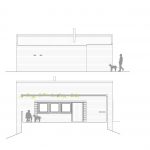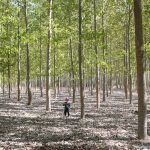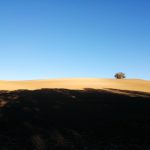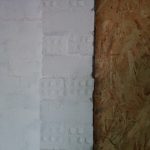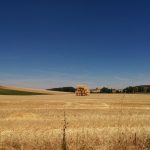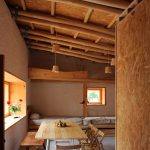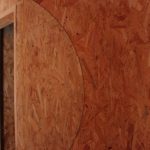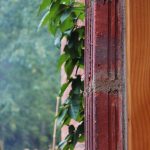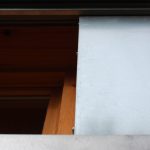Year
2016/2018
Location
Carrizal Stream, Fuentesauco, Zamora.
Latitude: 41º 15′ 02,6” N
Longitude: 5º 32′ 02,9” W
Developer
Jose Manuel Queipo
Architect
Fermín González Blanco
Team
Saúl Gómez Rubio
Luis Miguel Fernández López
Alba Pérez Fernández
Jose María Castrillo Neira
Self-Builder
Queipo Family
Collaborators
“El Chicuelo” (brickwork)
“El Troncones” (supply of straw bales)
Nicolás (plumbing and electricity)
Ramón (carpentry)
Photography
Minimal Edition Team (Ana Asensio and Milena Villalba)
[First Prize: Architecture of Sensations of photography + story of Pez Globo]
Fermín Blanco Team
Budget
The felling of a poplar grove (1000 poplars) (approximately 30,000 Euros)
Publications
afasia archizine [link]
Divisare blog [link]
2016/2018
Location
Carrizal Stream, Fuentesauco, Zamora.
Latitude: 41º 15′ 02,6” N
Longitude: 5º 32′ 02,9” W
Developer
Jose Manuel Queipo
Architect
Fermín González Blanco
Team
Saúl Gómez Rubio
Luis Miguel Fernández López
Alba Pérez Fernández
Jose María Castrillo Neira
Self-Builder
Queipo Family
Collaborators
“El Chicuelo” (brickwork)
“El Troncones” (supply of straw bales)
Nicolás (plumbing and electricity)
Ramón (carpentry)
Photography
Minimal Edition Team (Ana Asensio and Milena Villalba)
[First Prize: Architecture of Sensations of photography + story of Pez Globo]
Fermín Blanco Team
Budget
The felling of a poplar grove (1000 poplars) (approximately 30,000 Euros)
Publications
afasia archizine [link]
Divisare blog [link]


Memory & Photos
Where are we?
The project of the shelter is carried out on a plot between Fuentesauco and Villamor de los Escuderos in the province of Zamora. Its extreme climate is characterized by high temperatures in summer and temperatures below zero in winter. Surrounded by fields of cereal cultivation, mainly wheat and barley, and crossed by a small stream (stream of the Carrizal) the plot where the refuge is located is mainly destined to the cultivation of poplars although, in the same place, there is a kind of almond dedicated to the cultivation of arboreal species of the world, creating a green ecosystem in the middle of the dominant yellow area. The climate and the natural elements that dominate the environment will condition, as it should not be otherwise in a self managed project like this, the approach of the solutions adopted in the rehabilitation.
What do we find?
The existing nave is built with a perimeter system of walls made by double hollow bricks, concrete flooring as floor forging and a gable roof of metal lattice and fibrocement corrugated sheet. After the collapse of a slope of the gable roof, a section of the nave becomes a vegetable garden so that in the intervention of the shelter the character of open patio must be preserved.
What do we need?
The project consists on the rehabilitation and adaptation of a small building, originally intended for the storage of tools linked to the forestry use of the estate, as a weekend shelter. Due to its personal, temporary and familiar nature, there are no great spatial needs, only those that cover the minimum of comfort, habitability and socialization and reunion (kitchen, bathroom, area of beds and central zone of day), since to generate that point of encounter and family enjoyment is the main function of this shelter. Built with a gable roof of metal lattice and fibrocement corrugated sheet and double hollow brick perimeter closure.
Self construction or how to transform a weakness into strength
The work is undertaken with a limited budget since a felling of 1000 exploitable poplars, with an exploitation of 0.5 cubic meters per poplar and a price of 60 euros/cubic meter result 30.000 euros, of which the expenses of the next planting will have to be deducted. From this point on, and taking into account the money finally available, the self construction becomes indispensable condition to undertake the work, thus avoiding the expenses arising from the appearance of intermediaries and industrial profits of construction companies. The promoter assumes the most of the work in collaboration with his own family, contacting directly with local self-employees for the resolution of the specialized work, mainly plumbing and electricity.
Build with the environment
21 poplars freshly cut down, peeled just after the felling and bleached with bleach and a metallic scourer: beams, lintels, common rafters and wooden pillars resolved; wheat and rye mixture bales from surrounding crop fields: isolation resolved; bricks, OSB wood panels and concrete available in a radius of 50 km: façades closing and floors resolved. The work aims to be an exercise of economic and constructive rationality. Building with materials from the immediate environment is a lesson often forgotten by contemporary architecture and learned through popular architecture, which has long spoken of economy, ecology and sustainability, concepts that have ceased to be a fashion to become a necessity
Then I’ll huff and I’ll puff and I’ll blow your house in…
The project is also a review of the knowledge learned. Popular wisdom, sayings or even stories like The Three Little Pigs give us knowledge that must be revised with the passage of time and the evolution of construction techniques. The project includes the bale of straw as a building element due to the extreme climate, the level of insulation required in this type of climate and the wide availability of the same in an immediate area where cereals are growing at a reasonable price. From this reasoning we work with the material, with its strengths and weaknesses. The porosity of the straw bale as well as the amount of air it could hold inside make it an optimal material since a thermal insulation point of view. A brick base is constructed by separating the bales from the direct contact with the ground and placed between two brick leaves in order to avoid the entry of rodents, the construction of nests inside the chamber and direct contact with water.
The story of the Three Little Pigs tells us that brick and cement houses are safer and better than straw or wooden houses. The conclusion we can draw from the story and from this experience is that it is not convenient to commission a pig to build a house.
Holes? Not many
From the existing main volume, built with double hollow brick walls, the opening of the minimum holes necessary for a comfortable space is considered. The existing hole in the bed area is maintained. A new one is opened to the courtyard that solves the lighting needs, ventilation and interior-exterior connection that, due to its dimensions, is reinforced with thermoblock jambs and a lintel based on poplar rolls. The holes are solved with pine wood joinery and, if these are made of glass, they have opaque exterior shutters of plywood, finished with a steel sheet that allows to close the volume to the outside completely. The result is a volume fundamentally opaque to the outside for reasons of thermal comfort, intimacy and safety. A chest.
The project of the shelter is carried out on a plot between Fuentesauco and Villamor de los Escuderos in the province of Zamora. Its extreme climate is characterized by high temperatures in summer and temperatures below zero in winter. Surrounded by fields of cereal cultivation, mainly wheat and barley, and crossed by a small stream (stream of the Carrizal) the plot where the refuge is located is mainly destined to the cultivation of poplars although, in the same place, there is a kind of almond dedicated to the cultivation of arboreal species of the world, creating a green ecosystem in the middle of the dominant yellow area. The climate and the natural elements that dominate the environment will condition, as it should not be otherwise in a self managed project like this, the approach of the solutions adopted in the rehabilitation.
What do we find?
The existing nave is built with a perimeter system of walls made by double hollow bricks, concrete flooring as floor forging and a gable roof of metal lattice and fibrocement corrugated sheet. After the collapse of a slope of the gable roof, a section of the nave becomes a vegetable garden so that in the intervention of the shelter the character of open patio must be preserved.
What do we need?
The project consists on the rehabilitation and adaptation of a small building, originally intended for the storage of tools linked to the forestry use of the estate, as a weekend shelter. Due to its personal, temporary and familiar nature, there are no great spatial needs, only those that cover the minimum of comfort, habitability and socialization and reunion (kitchen, bathroom, area of beds and central zone of day), since to generate that point of encounter and family enjoyment is the main function of this shelter. Built with a gable roof of metal lattice and fibrocement corrugated sheet and double hollow brick perimeter closure.
Self construction or how to transform a weakness into strength
The work is undertaken with a limited budget since a felling of 1000 exploitable poplars, with an exploitation of 0.5 cubic meters per poplar and a price of 60 euros/cubic meter result 30.000 euros, of which the expenses of the next planting will have to be deducted. From this point on, and taking into account the money finally available, the self construction becomes indispensable condition to undertake the work, thus avoiding the expenses arising from the appearance of intermediaries and industrial profits of construction companies. The promoter assumes the most of the work in collaboration with his own family, contacting directly with local self-employees for the resolution of the specialized work, mainly plumbing and electricity.
Build with the environment
21 poplars freshly cut down, peeled just after the felling and bleached with bleach and a metallic scourer: beams, lintels, common rafters and wooden pillars resolved; wheat and rye mixture bales from surrounding crop fields: isolation resolved; bricks, OSB wood panels and concrete available in a radius of 50 km: façades closing and floors resolved. The work aims to be an exercise of economic and constructive rationality. Building with materials from the immediate environment is a lesson often forgotten by contemporary architecture and learned through popular architecture, which has long spoken of economy, ecology and sustainability, concepts that have ceased to be a fashion to become a necessity
Then I’ll huff and I’ll puff and I’ll blow your house in…
The project is also a review of the knowledge learned. Popular wisdom, sayings or even stories like The Three Little Pigs give us knowledge that must be revised with the passage of time and the evolution of construction techniques. The project includes the bale of straw as a building element due to the extreme climate, the level of insulation required in this type of climate and the wide availability of the same in an immediate area where cereals are growing at a reasonable price. From this reasoning we work with the material, with its strengths and weaknesses. The porosity of the straw bale as well as the amount of air it could hold inside make it an optimal material since a thermal insulation point of view. A brick base is constructed by separating the bales from the direct contact with the ground and placed between two brick leaves in order to avoid the entry of rodents, the construction of nests inside the chamber and direct contact with water.
The story of the Three Little Pigs tells us that brick and cement houses are safer and better than straw or wooden houses. The conclusion we can draw from the story and from this experience is that it is not convenient to commission a pig to build a house.
Holes? Not many
From the existing main volume, built with double hollow brick walls, the opening of the minimum holes necessary for a comfortable space is considered. The existing hole in the bed area is maintained. A new one is opened to the courtyard that solves the lighting needs, ventilation and interior-exterior connection that, due to its dimensions, is reinforced with thermoblock jambs and a lintel based on poplar rolls. The holes are solved with pine wood joinery and, if these are made of glass, they have opaque exterior shutters of plywood, finished with a steel sheet that allows to close the volume to the outside completely. The result is a volume fundamentally opaque to the outside for reasons of thermal comfort, intimacy and safety. A chest.



















